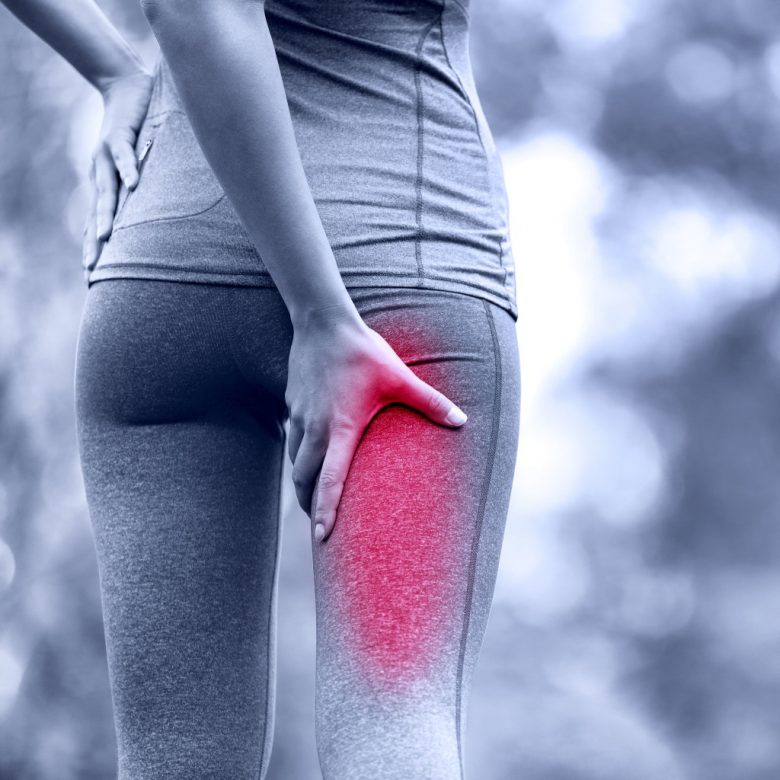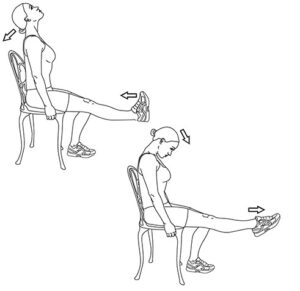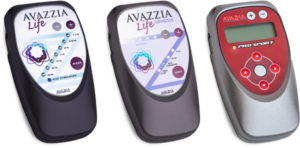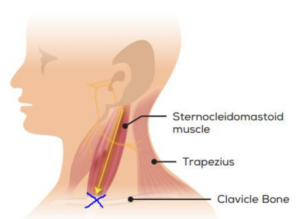
One day you’re able to bend down in the garden, lift your grandkids, or head out for a brisk hike—and the next— you can hardly get out of bed. If you’ve ever felt a burning, throbbing pain in your lower back/ buttock—it might be sciatica. And if you’ve ever tried quick-fix solutions like over-the-counter anti-inflammatories, you know they just don’t touch sciatic nerve pain.
So, what do you do when sciatica is affecting your quality and enjoyment of life? Treat it naturally! Today we’re sharing some of the most effective techniques for addressing sciatica.
Our natural sciatica treatments require:
- No injections
- No drugs
- No surgeries
- And no long recovery times
Read on to find out how you can finally find relief from this troublesome condition.
What is Sciatica?
First, let’s talk about the sciatic nerve. It branches all over the lower back through the hips, buttocks, and down each leg. Sciatica is a condition defined by acute or chronic pain that radiates alongside the path of the sciatic nerve. As many as 40% of people will develop sciatica in their lifetime, with odds increasing as we age. Those who suffer from sciatica often only experience it on one side of their body.

Common Causes of Sciatica
Sciatica is often regarded as a chronic and treatment-resistant pain syndrome. This is because it is difficult to pinpoint the exact root cause of sciatic nerve pain in many cases. But the bottom line is this: when the sciatic nerve becomes impinged—you will run into problems.
Here are some of the most accepted causes of sciatica according to medical professionals:
- Lumbar herniated disc (aka. slipped disc or ruptured disc)— experts believe an estimated 90% of cases of sciatica are associated with a lumbar herniated disc. This problem is most common in people between the ages of 30-50 years old.
- Lumbar spinal stenosis— a common cause of sciatica in those over 60 years of age is spinal stenosis (narrowing of the spinal canal).
- Degeneration— when intervertebral discs degenerate, they may emit inflammatory proteins, triggering inflammation of the sciatic nerve.
- Piriformis syndrome— occurs when a small muscle in your buttock that runs over the sciatic nerve is tight. Tightness in the piriformis can then compress the sciatic nerve and cause pain.
- Spondylolisthesis— when a minor stress fracture causes a vertebra to slip forward upon another, resulting in nerve compression.
Even if you can’t figure out exactly what’s causing your sciatica, there’s hope for eliminating your pain! We have some practical and natural approaches to keeping that cringing pain at bay below.
Risk Factors for Developing Sciatica
People of any age can develop sciatica, but it is more common as we get older and in those who work jobs that are hard on the body like truck driving, factory work, office work, agriculture work, and warehouse work.
Here are some of the most common risk factors associated with sciatica:
- B-12 deficiency
- Depression
- Genetics
- Obesity
- Poor ergonomics at work
- Certain occupations
- Previous spinal cord injury
- Pregnancy
- Sedentary lifestyle
- Smoking
Sciatica can be excruciating, but luckily it can often be treated naturally at home. For those who experience weakness in their legs or incontinence due to sciatica— you should speak with your doctor.
Simple Tips for Ending Sciatica Naturally
Supplements
Some holistic medical professionals recommend using supplements for sciatica. Supplements are a great option to try because they are typically inexpensive, non-habit-forming, and non-addictive.
The following supplements have been reported to help ease the symptoms of sciatica:
- Turmeric
- Vitamin B-12
- Magnesium
- Omega-3
Posture
Something as simple as poor posture can flare up sciatic nerve pain, so be mindful of your posture when walking, sitting, or working. Gentle exercise will keep your back strong and support proper posture.
Looking for some simple low-impact exercises to keep your back happy and healthy? Check out our blogs:
- 4 At-Home Exercises for Chronic Pain Warriors
- 8 Exercises for People in Pain
- 3 Exercises to Try if You Have Arthritis
Insoles
If you spend a good deal of time on your feet and think it may be contributing to your sciatic nerve pain, we suggest trying special sciatica insoles in your shoes. It’s important to remember that insoles alone cannot prevent or eliminate sciatica, but they can be a hugely beneficial tool in conjunction with stretching, good posture, and microcurrent therapy.
2 Exercises for Immediate Sciatica Relief
Complete and long-lasting elimination of sciatica may not be something you can achieve instantly, but immediate sciatica relief is absolutely possible.
Try these exercises to remove impingement of the sciatic nerve when you feel a flare-up of pain:
1. Sciatic Nerve Flossing
This exercise can alleviate sciatica and lower back pain by massaging a compressed sciatic nerve. If you suffer from sciatica, try doing this exercise every morning and night to keep your sciatic nerve happy and avoid inflammation flare-ups.

Instructions:
- Sit in a chair—slightly hunched— with your legs floating off the edge.
- Place both hands on your thighs.
- Straighten your knee while looking upwards.
- Slowly lower your leg while gently bowing down your neck.
- Return to the original position.
Repeat these steps three times to complete a circuit. Start by performing three to five circuits a day and work up to ten. This exercise can be used to stop sciatica in its tracks preventatively.
2. Cat-Cow (Yoga Pose)
Even if you think yoga isn’t your thing, give this stretch a try to ease tightness and inflammation associated with sciatica as it relieves compression in the lower back.

Instructions:
- Kneel on your hands and knees, keeping your arms square with your shoulders and knees square with your hips.
- Gently bend your low back while looking upwards (inhale while doing so).
- Hold this pose for two seconds.
- Next, arch your back and look downwards (exhale while doing so).
- Hold this pose for two seconds.
Repeat these steps ten times in a row once a day.
Microcurrent Solutions for Sciatica
Microcurrent therapy is a systemic solution for sciatic nerve pain that addresses the problem at the root while training your brain to be pain-free.
Needle-Free Acupuncture
A 2015 review found that acupuncture was more effective than conventional Western medicines in relieving sciatica pain.
- To learn more about needle-free acupuncture with microcurrent technology, read our blog, Balancing Meridians With Microcurrent Therapy.
Little Wings Protocol
We love using this protocol for sciatica in our clinic because it takes pressure off the spine by realigning the hips.
Equipment needed:

Little Wings Protocol Instructions:

- Set your Avazzia microcurrent device to 121 Hz.
- Place the Y-Electrode on your shoulder and adjust the power to a comfortable level.
Note: You will feel a loss of control in your shoulders and experience minor pulling on your arm. The Little Wings Protocol isn’t dangerous but be prepared for this sensation so you are not caught off guard.
- Position the electrode behind the ear and bring it down along the sternocleidomastoid muscle where the neck joins the shoulder. At this time, you can expect to feel a flutter or tug on your shoulder. The muscle will then contract for several seconds and then release. That’s considered one “flap.”
Note: If you feel a sensation but don’t get a pulling sensation, increase the power on your Avazzia device, and you should then achieve the tugging or “flap” on the shoulder.
- Allow the shoulder to “flap” 5 times.
- Remove the electrode from the skin.
- Treat the other side of the neck for another 5 “flaps.”
To learn more about the Little Wings Protocol, please read our blog on the subject.
Eliminate Sciatica Pain With The Hache Protocol ™
Ultimately healing from sciatica will require a full-body approach. The Hache Protocol for Pain Resolution™ incorporates five vital pillars of healing that place your body in the best possible condition for long-term and meaningful healing.
Learn more about how The Hache Protocol ™ can help you address sciatica and other acute or chronic pain conditions HERE.





